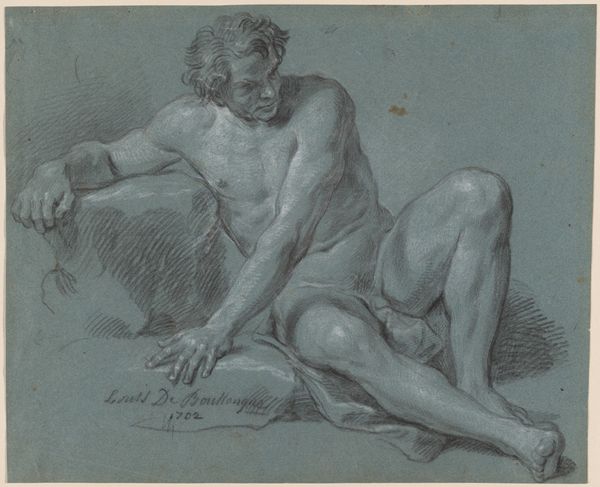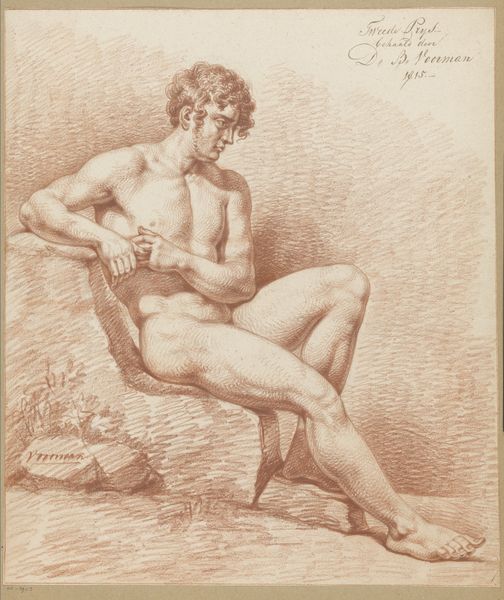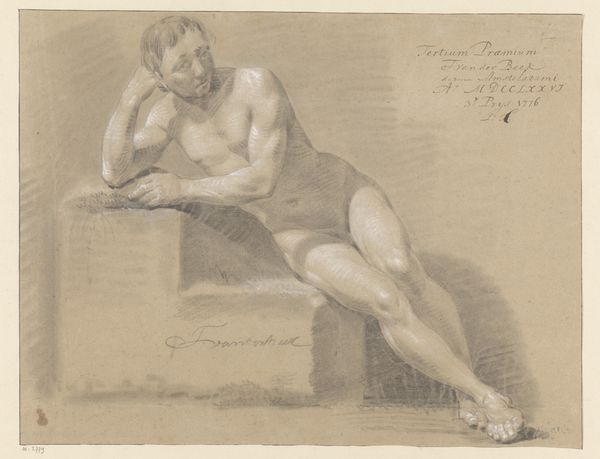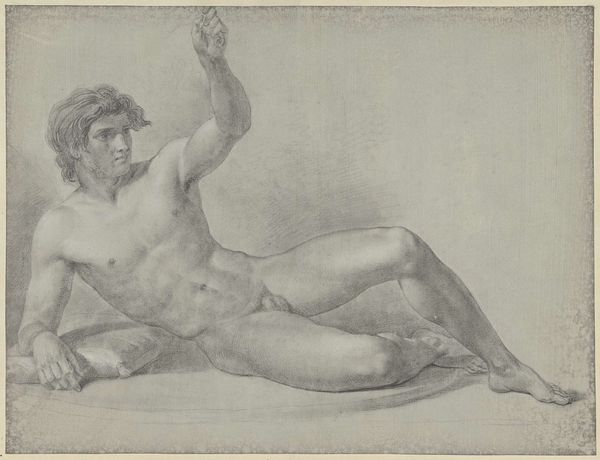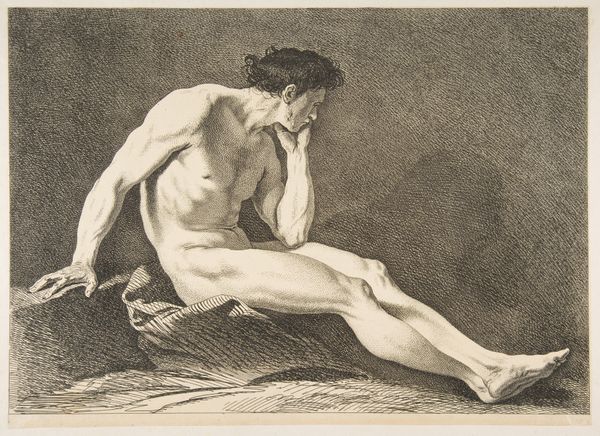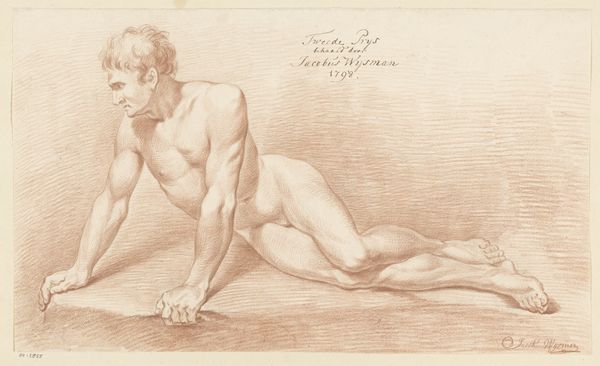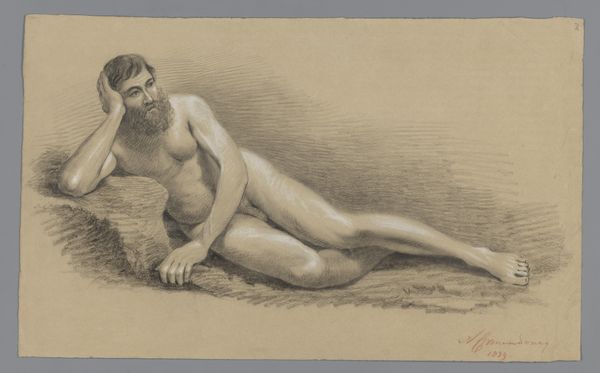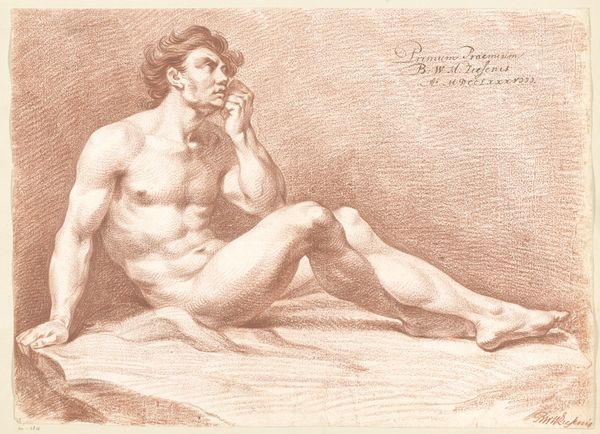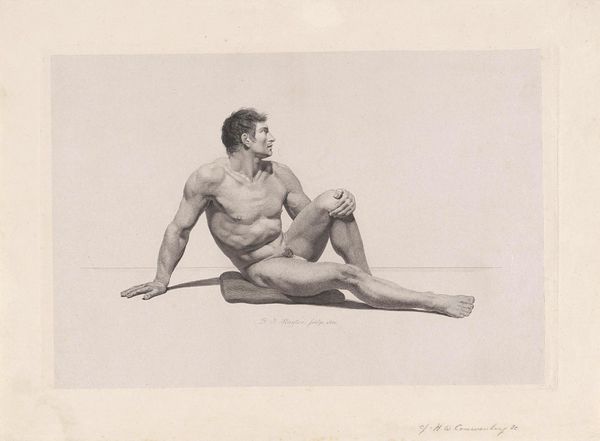
drawing, charcoal
#
portrait
#
drawing
#
neoclacissism
#
charcoal drawing
#
portrait drawing
#
charcoal
#
history-painting
#
academic-art
#
nude
Dimensions: height 405 mm, width 557 mm
Copyright: Rijks Museum: Open Domain
Curator: This is J. Uittenbogaardt's "Sitting Male Nude, Front View (2nd prize 1810)," a charcoal drawing dating back to 1810. It exemplifies academic art and neoclassical ideals. What strikes you first? Editor: He looks a bit… melancholy, doesn't he? Pensive, maybe even troubled. It’s not the triumphant, god-like figure I’d expect from this era. There is great anatomical accuracy to the musculature, but it is also surprisingly raw. Curator: I find myself thinking about the institutional context here. This wasn't just art, it was a prize-winning submission. Uittenbogaardt had to demonstrate mastery of form and line, conforming to very specific standards dictated by the academy. The use of charcoal underscores the technicality required, its readily available as a study medium rather than more costly or permanent materials. Editor: The contrast in textures draws me in. See how the rendering of the figure seems almost… soft? But then there’s this incredibly detailed, almost frantic scribbling in the rock. The textures pull against each other. Curator: Exactly. Think of the labour involved. Every stroke is deliberate. It demonstrates a particular system of artistic training dominant at the time, aimed at refining artists into skilled producers of specific imagery in service to certain ideologies, usually with some overt propagandistic utility, if you look at it sociologically. Editor: I keep coming back to his gaze. He doesn’t meet our eyes, which is interesting given the classical style. I'm curious about the model—his lived experience. There’s vulnerability here, something intimate, at odds with the formal requirements of academic art. Makes you wonder what he was thinking. What they were both thinking. Curator: Perhaps the tension comes from that negotiation—between the artistic conventions of the era, and the unpredictable humanity of both model and artist. It gives this charcoal nude a quality rarely found in neoclassical pieces. Editor: Maybe so. I'll think about how his humanity got smuggled in. Curator: Indeed, art is so frequently that moment when humanity leaks into otherwise rigidly constructed containers of expression.
Comments
No comments
Be the first to comment and join the conversation on the ultimate creative platform.
